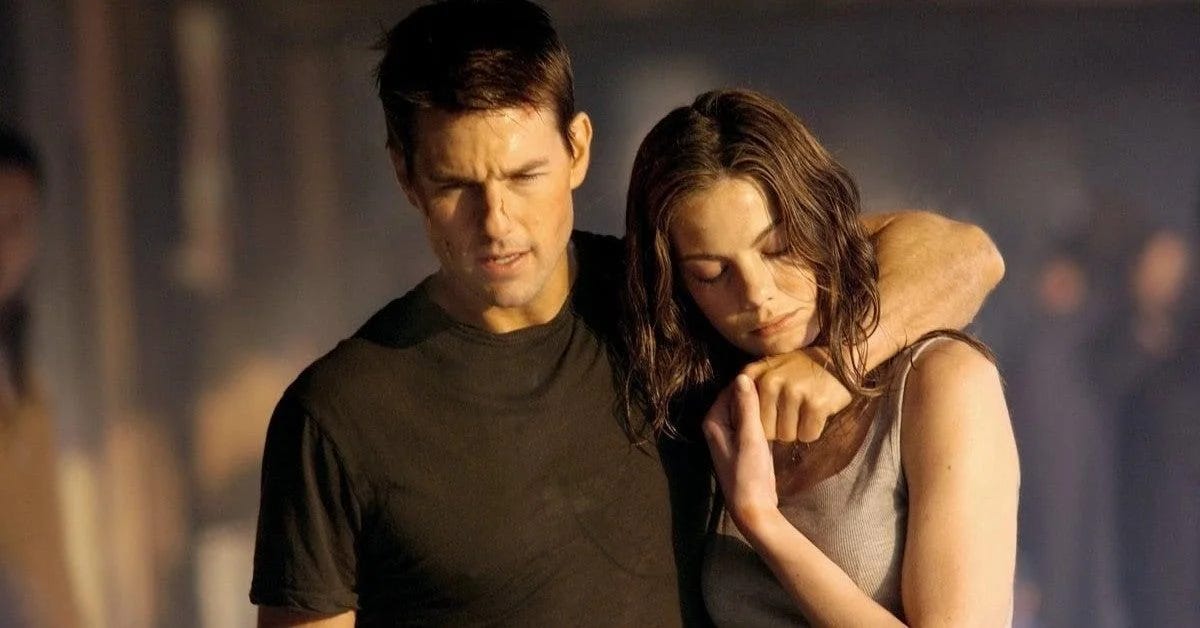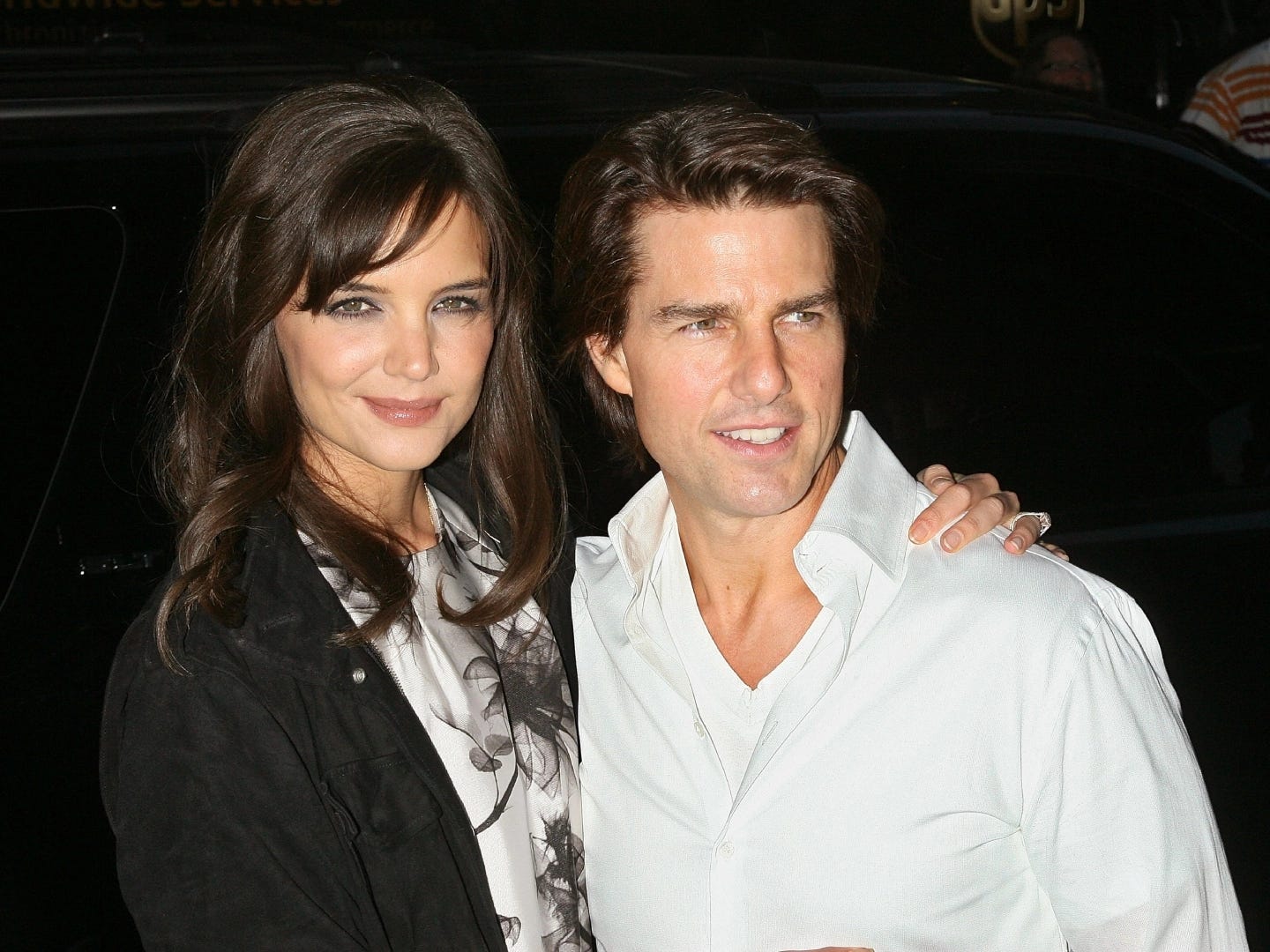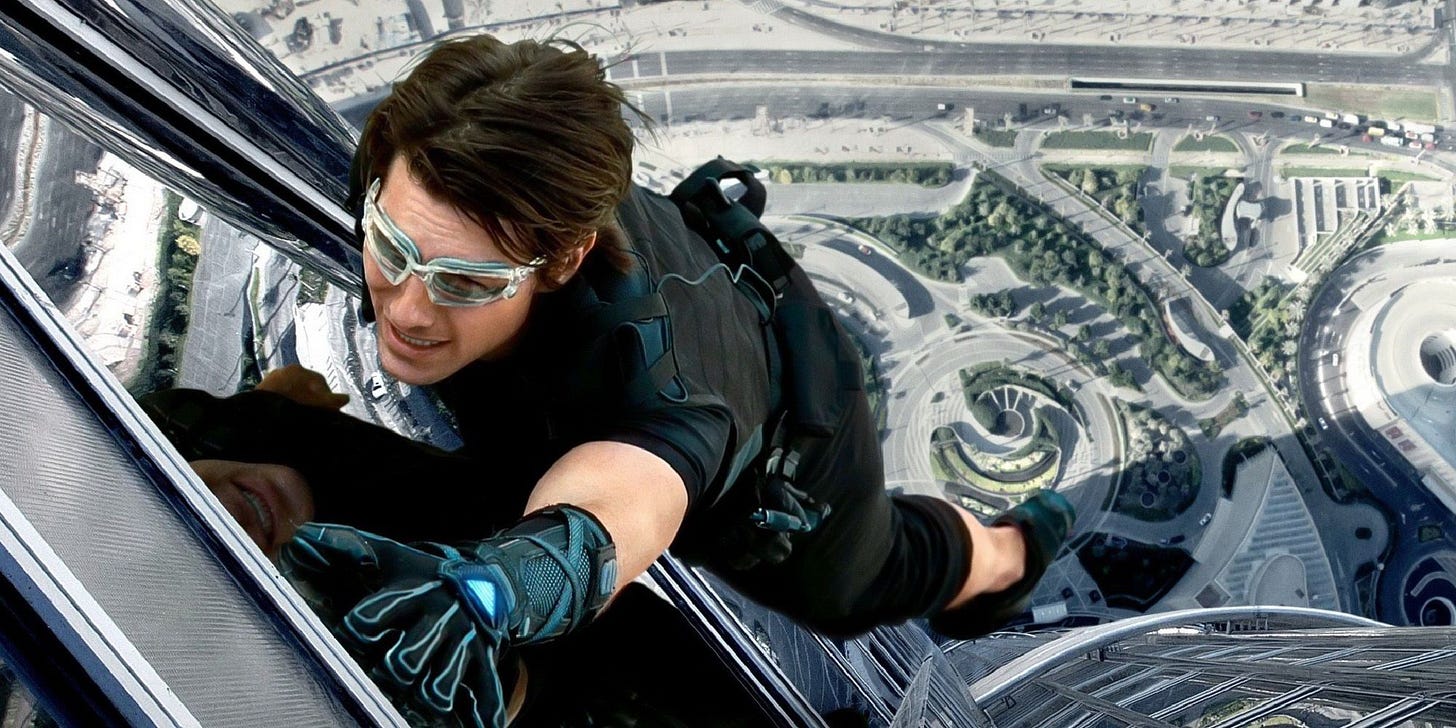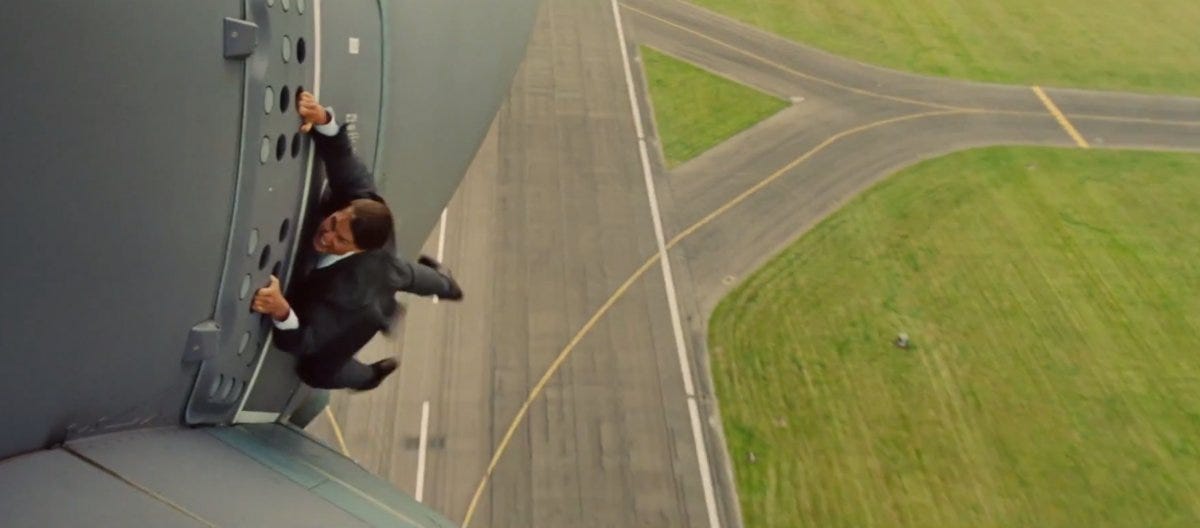There’s something about the Tom Cruise Mission: Impossible movies that is very strange, and hasn’t really been fully understood. Those movies (there have been seven of them now), capture something about the zeitgeist, but are also strangely irrelevant—they’re big blockbuster movies but they don’t really matter that much. The best way to understand them, I have come to realize, is as surprisingly personal depictions of Tom Cruise’s life at the time they were made. And as his life has become progressively more insane, I think life in general has as well, in very similar ways—relations between human beings have steadily broken down, and been replaced by relations with objects, in various ways. Let’s take a quick look.
Tom Cruise’s Mission: Impossible journey started in 1996. He had done some action movies, but this was a big step up, in terms of pure action and spectacle. His previous action-ish movies were mostly about character, like Top Gun, but with action elements. Mission: Impossible was just pure action, no character. The first one was pretty good, though kind of slow, and not all that interesting. The sequels are where things get real.
Mission: Impossible 2 came out in 2000, right after Eyes Wide Shut (1999), where he starred with his real life wife, Nicole Kidman. Many have speculated that that movie helped cause their divorce, because of director Stanley Kubrick’s infamous penchant for doing tons of takes—and with the subject matter of that movie delving so deeply into marital problems, it’s no surprise that it sparked real issues with them. I’m sure it wasn’t entirely due to that movie, but it definitely didn’t help. Cruise and Kidman got divorced in 2001, and Mission: Impossible 2 came out in 2000, as he was going through the divorce process. And that movie is notable mostly for Cruise weirdly having long hair and riding a motorcycle, which he didn’t in any of the other Mission: Impossible movies. It just looks and feels like classic divorced guy stuff.
That’s the divorce movie. Then he doesn’t do another Mission: Impossible movie until 2006, with Mission: Impossible 3. That movie is all about his character, Ethan Hunt, marrying a woman played by actress Michelle Monaghan, who looks an awful lot like Katie Holmes, the actress he married in real life in 2006.
Kind of uncanny isn’t it? Mission: Impossible 3’s main point is how much Tom Cruise cares about his nice normal wife, and wants to be with her, etc. The villain, Philip Seymour Hoffman, threatens to kill her, and Tom Cruise gets angrier than he’s been maybe ever. The movie ends with them happily going off on their honeymoon together.
It feels like Mission: Impossible 3 was like a dress rehearsal for his normal nice marriage to Katie Holmes, a way of showing how serious he was about it, to make marrying a woman who looks exactly like Katie Holmes the main point of the movie and like Tom Cruise could just point to Mission: Impossible 3 whenever Katie Holmes got mad at him for being so weird: "I married a woman who looks just like you in Mission: Impossible 3! I made that the center of the whole movie!" The mid 2000s was also the time when everyone thought Tom Cruise was insane, because he jumped on Oprah’s couch, and so on.
Then five years go by, and Mission: Impossible 4 (Ghost Protocol) comes out in 2011. You might expect his wife, who was the whole point of the previous movie, to be in this one—but she is not. She doesn’t even appear (she does come back briefly with her new husband in Mission: Impossible 6 in 2018). There’s a line about how he had to leave her in order to go on an important mission, and that’s that. And of course, 2011, when Mission: Impossible 4 came out, is the year he got divorced from Katie Holmes.
Starting with Mission: Impossible 4, there’s a shift in the movies, where it becomes all about specific big stunts. That’s the one where all the marketing and hype was about how he performed his own stunts, and climbed on the world’s tallest building, the Burj Khalifa in Dubai.
There are still women in the movies from this point on, but he doesn’t really have romantic interest in them. He kind of just views them as competent colleagues. His real erotic attachment is to the stunts he does, and to the objects he performs the stunts on and with. The way he talks about the stunts in the marketing for the movies from then on almost has a romantic angle to it, like he has some mysterious connection with the stunts, with the tall building, with danger, that in a different time would have been an erotic connection with a human woman—but now it’s just him and the stunts. He has lost interest in human women and is just interested in objects. It might be interesting to note that this was 2011, when smartphones and social media really became fully ubiquitous, and I would bet that numbers of people having actual sex (and children) started to decline around this same time. And Tom Cruise himself has not remarried, or even been romantically linked to anyone (that I am aware of), ever since his divorce from Katie Holmes.
Then in the next movie, Mission: Impossible 5 (Rogue Nation) in 2015, the trend continues—there’s no romantic interest in the movie, there’s no room for that, because it’s all about the big stunt. In this one, it’s the stunt where he hangs off the side of a plane while it’s taking off. Apparently he did this for real.
He clearly gets more of an erotic charge from this than from being with any woman. In these movies now, the media coverage is all about the big stunt—media asks him about the stunts in the way they used to ask him about women he was involved with. The stunts have taken the place of his romantic involvements. Interacting with objects has taken over for him in these movies, just as they have for society at large, over the last decade or so.









Allegedly, Tom was almost decapitated during a stunt/fight scene in 'The Last Samurai'(2003), and I think he's been chasing that near-death high ever since.